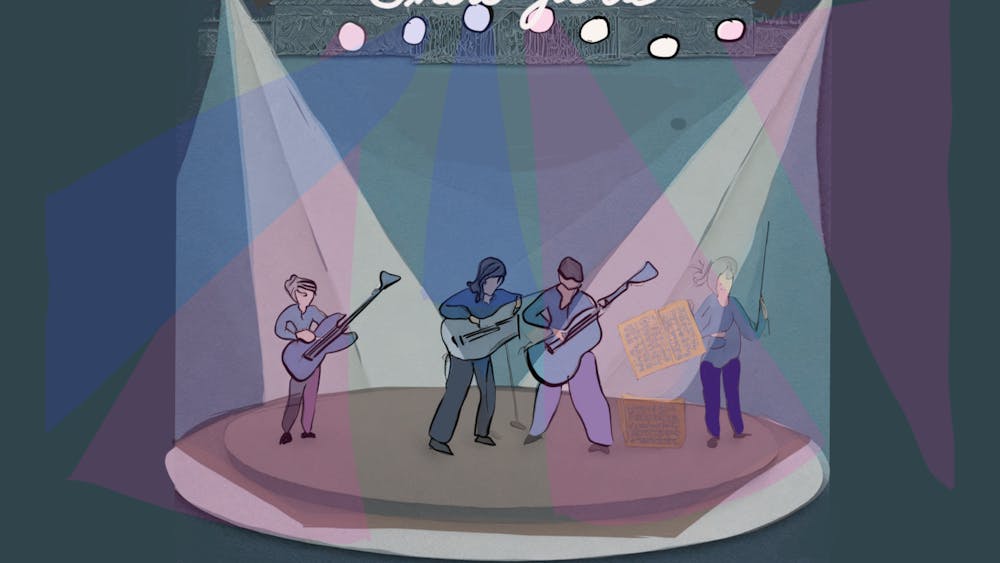The Eskenazi Museum of Art invites speakers to discuss their takes on art exhibits in front of students and members of the Bloomington community in its “Noon Talk” series.
The most recent Noon Talk took place Wednesday and featured Sonia Velázquez, assistant professor of religious studies and comparative literature.
She gave a 45-minute presentation during which she discussed two drawings from Domenico Tiepolo’s 12-drawing New Testament series.
From the start of Velázquez’s talk, her personality and sense of humor showed through.
Audience members were encouraged to laugh and participate the entire time. She began her talk by making a disclaimer about her cold.
“This talk is sponsored by Kleenex,” Velázquez said while holding tissues in her hand.
Focusing on two drawings of the series of Paul’s conversion, Velázquez opened with an excerpt of Derek Walcott’s poem “Tiepolo’s Hound.”
The poem was a preface for the rest of the talk — partly focused on the use of transition, light and darkness in Tiepolo’s drawing.
Beginning with the drawing “The Conversion of Paul,” Velázquez first described the importance of knowing Paul’s background before he became a Christian and changed his name from Saul to Paul.
“Saul is a Jewish officer, and he is zealously defending his faith and doing what he thinks is right by prosecuting Christians,” Velázquez said.
In “The Conversion of Paul” his change of faith begins and is shown within the drawing.
Paul’s conversion begins when he is blinded by light and a voice.
For three days he could not see and did not drink or eat.
“How are we going to represent something that is not visible?” Velázquez said.
Velázquez goes on to help the audience see what is not visible through the different symbols and representations found in the drawing.
Paul’s past was shown as the sturdy horse falling to the ground.
His transition to Christianity and the experience of being blind and without food or drink was represented by the sunlight and clouds that appeared as smoke in the drawing.
From there Velázquez began the comparison between “The Conversion of Paul” and “Ananias Restoring Paul’s Sight.”
The drawings take place only three days apart, yet they convey very different meanings.
While “The Conversion of Paul” shows how Paul was falling because he was not a believer in the Christian faith and was killing those who were, ”Ananias Restoring Paul’s Sight” is different because it reveals his recent conversion to Christianity in numerous and symbolic ways.
Instead of a horse in the second drawing, a dog represents Paul’s new obedient nature contrary to his former dominance.
Along with this there is both a closed door and an opened window to represent the hope for new beginnings.
When asked why Velázquez chose “The Conversion of Paul” and “Ananias Restoring Paul’s Sight” instead of the other 10 drawings, she said it was because of her fascination with conversions.
“Not only do we get a domestic scene of a chair and a table, but we also get a door that contrasts with the open window,” Velázquez said. “This is the past and the present.”






